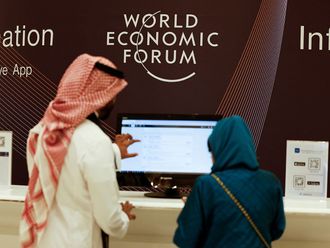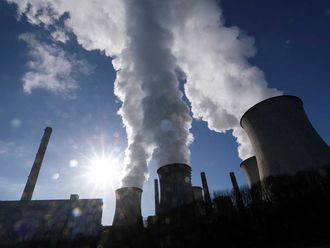
Abu Dhabi: The UAE's growth rate will remain "low" in 2010, but it will be better than that in 2009, Central Bank Governor Sultan Bin Nasser Al Suwaidi said Monday in the first official high-level response to the International Monetary Fund's (IMF) revision late last month of the country's economic forecast.
"We do not contradict their prediction," said Al Suwaidi in a rare press conference. "But the IMF changes their forecasts from time to time."
The IMF report lowered its 2010 GDP growth forecast for the UAE from 2.4 per cent to between 0 and 1 per cent, citing continued instability in the Dubai real estate sector. The fund said its calculations show the UAE economy contracted by 0.7 per cent in 2009 compared to an earlier projection of -0.2 per cent.
The IMF criticised the low level of transparency in government decision-making, but credited the steps taken by the Central Bank which pumped Dh70 billion into the banking sector, guaranteed deposits and lowered interest rates with helping the country avoid a bigger slump.
Investment bank projections for growth this year have hovered around 2 per cent. The Ministry of Economy maintains it expects growth to reach 3.2 per cent.
Al Suwaidi reiterated that banks are not in need of more liquidity in order to spur lending activity, but said the UAE still faces "lingering effects" of the global financial crisis.
Loans and advances grew by just 2.4 per cent in 2009 to Dh1.02 trillion, according to Central Bank data, after sustaining 30 per cent-plus growth since 2005 and nearing 40 per cent in 2008.
"[Loan growth in 2009] is a true reflection of demand," Al Suwaidi said.
Last week, Noor Islamic Bank Chief Executive Hussain Al Qemzi said the sector needs Dh20-Dh25 billion in additional funds in order to improve liquidity and increase lending.
Both sides of the equation are true, said Giyas Gokkent, Group Chief Economist for National Bank of Abu Dhabi, the country's second largest lender by assets.
Gokkent said: "The demand for loans has gone down, but banks have also been more prudent. If the sources of funding for banks grow more comfortable, that will improve bank lending domestically."
But Gokkent said previous growth rates above 30 per cent are not sustainable in the long term.
Rise and fall
Year Total bank loans and advances year-on-year growth (net of provisions)
2009 Dh1017.7 billion 2.4%2008 Dh993.7 billion 38.4%2007 Dh718.1 billion 33.6%2006 Dh537.4 billion 36.1%2005 Dh394.9 billion 37.7%2004 Dh286.7 billion 26.8%2003 Dh226.0 billion 18.4%2002 Dh190.9 billion --
Source: UAE Central Bank












